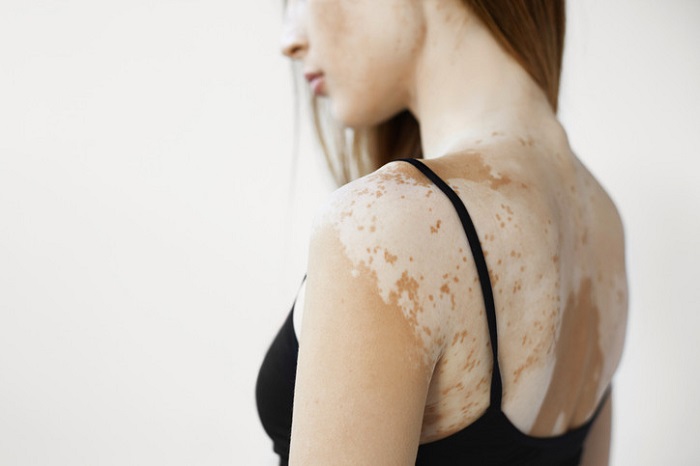Attention to any significant changes at the vulvar or vaginal level is essential to ensure optimal intimate and sexual health. Many women go to gynecological consultation because they have some variation in their area that worries them, and one of the most frequent reasons is to observe that the vulva has a whitish color, either due to spots, pimples, or vaginal secretions that have a white hue and are more abundant. The causes of this can be diverse, and among them are some infections or conditions that require early medical treatment. Continue reading this article by FastlyHealto to find the answer to why I have a white vulva.
Table of Contents
What does normal white discharge look like
Vaginal discharge is a liquid that protects the vagina from possible infections and usually has a clear and transparent color, which can lead to a whiter shade due to the moment or stage in which the woman is, because when, for example, there is increased hormonal activity in the female body, the flow may present slight changes in color, consistency, and texture without this meaning that there is any health problem. Let’s see below under what conditions or circumstances a whitish discharge can be expected and does not constitute an alarm sign:
- Pregnancy: In the first months of gestation, the discharge may become whiter, thicker, and more abundant due to an increase in the production of this liquid to protect the uterus and the fetus from possible infections.
- Sexual intercourse: When a woman is sexually aroused or has had intercourse, her discharge may be more abundant, whiter, and liquid.
- Ovulation: It is normal for the flow to be more abundant during the ovulation process or acquire a whitish color and a thicker consistency. In this case, the flow acts as a defense mechanism against harmful external agents since, at this time of the month, there are changes in the bacterial flora of the vagina, and it is more prone to developing infections.
However, a standard white discharge should not have a bad smell or be accompanied by other symptoms such as itching, burning, irritation, pain when having intercourse, or discomfort when urinating. In this case, it will be a sign that there is some personal health problem that should be treated by a gynecologist as soon as possible.

White paste or mass on the vulva due to vaginal yeast infection
When we observe a kind of paste or white mass on the vulva, this symptom likely indicates the suffering of a vaginal yeast infection or yeast infection, so this may be one of the causes that answers the question of “why I have a white vulva. ” Vaginal yeast infection is an infection caused by the overgrowth of the Candida Albicans fungus, which, when it proliferates excessively, can lead to the symptoms listed below.
Symptoms of vaginal yeast infection
- White, thick, and watery vaginal discharge looks similar to cottage cheese, which can cause that kind of white paste to be observed on the vulva that we have talked about.
- Redness of the vulva.
- Inflammation of the vulva.
- More sensitive labia.
- Itching, burning, and irritation.
- Urine discomfort.
- Discomfort when having sexual intercourse.
Treatment of vaginal yeast infection
Given the suspicion of having a white vulva due to candidiasis, it is imperative to go to the gynecologist to be able to cure this infection since its treatment requires the administration of antifungal medications, which are the only ones that can stop the excessive growth of the Candida Albicans fungus. These can be used locally by applying creams to the vagina or through the insertion of vaginal eggs. In other cases, an oral treatment based on the consumption of capsules or tablets may be prescribed.
Bacterial vaginosis – foul-smelling white discharge
If what you see is a white, thick, and foul-smelling discharge, very similar to that of fish, the cause may be bacterial vaginosis. This is a common vaginal infection caused by the proliferation of bacteria present in the vagina. This bacterial growth can be motivated by having different sexual partners, douching, taking antibiotics, or using the IUD, although the exact cause is often unknown.
Bacterial vaginosis symptoms
Many cases have been observed in which the woman who has this infection has no symptoms, and the disease is diagnosed during a gynecological test. However, when it does appear, it can cause symptoms such as:
- White or gray vaginal discharge with a fishy odor. This smell tends to be stronger after sexual intercourse and the days before the arrival of menstruation.
- Vaginal and vulvar itching.
- Stinging and burning during urination.
Bacterial vaginosis treatment
The treatment of this infection is based on taking antibiotic pills or applying antibiotic creams to the vagina to fight against the growth of bacteria. It is imperative to treat this infection at the first symptoms because if it is not treated correctly, it increases the risk of contracting a sexually transmitted disease or HIV.
White spots on the vulva from vitiligo
On the other hand, some skin conditions can also answer why I have a white vulva, one of which is vitiligo. This is a degenerative disease of the skin. The cells responsible for pigmentation stop producing melanin and, therefore, the skin loses its natural color, and asymmetrical white or light spots appear with defined borders.
Although vitiligo is not medically harmful, the appearance of these white spots can cause significant emotional distress in the affected person. No treatment stops the vitiligo process, but some treatments can even help the skin look more, although they sometimes have specific side effects. Treatment may include topical corticosteroids, ultraviolet light therapy, or surgery. In the following article, we explain in more detail what are the causes, symptoms, and treatment of vitiligo.

Other possible causes of having a white vulva
- Vulvar lichen sclerosis: a rare and more common condition in older adults that causes the appearance of soft white spots that later wrinkle, appear cracks and give rise to the presence of reddish or purple spots. This condition seems to be related to an alteration of the immune system, in which the defenses mistakenly attack the skin and a hormonal imbalance.
- Fordyce spots: small bumps that appear on the vulva due to the obstruction of the sebaceous glands in the area. They can be white or the same tone as the skin and are not a disease but rather a natural skin condition that some women present. They can pose an aesthetic problem for some women, so they usually seek some treatment to help them eliminate them.
This article is merely informative. At FastlyHeal .com, we do not have the power to prescribe medical treatments or make any diagnosis. We invite you to see a doctor in the case of presenting any condition or discomfort.
If you want to read more articles similar to Why do I have a white vulva, we recommend that you enter our Female Reproductive System category.

I am a Surgeon with a diploma in comprehensive ultrasound and surgical care residency, an area I am specializing in. During the exercise of my profession, I have realized the need for patients to know the diseases they suffer, and I can tell you that a large part of their complications is due to a lack of information. Being a health web writer allows me to transmit my experience, without borders, to all those readers eager for knowledge, educate them in the prevention of diseases and promote a healthy lifestyle.

